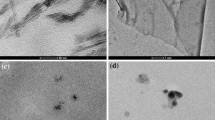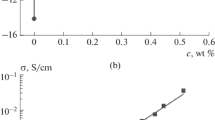A concept of a composite possessing a biomimetic function of visual response in the form of a “bruise” to an external mechanical action has been developed. The concept is implemented by creating a model layered epoxy composite. Methods for creating a sensitive layer, containing microcapsules with a leuco dye and particles of a developer, and a composite including this layer are described. The threshold of a visual response, i.e., the sensitivity of the composite to a local indentation load is controlled by means of a protective epoxy coating of various thickness. Series of mechanical tests with a gradually increasing load and subsequent digital image analyses were carried out. The data obtained were used to determine the required thickness of the epoxy coating in relation to the desirable threshold of visual response to an indentation load. The Hertz theory was used to analyze the resulting stresses in the coating in the elastic approximation. The experimental results allowed us to determine the normal threshold pressure causing the action of a sensitive layer embedded into the epoxy composite.






Similar content being viewed by others
References
Patent: US 7647809 B1. D. E. Cooney, Approach for Indicating the Occurrence of a Mechanical Impact on a Material, such as Low-Ductility Composite Material, US, January 19 (2010).
R. S. Trask, H. R. Williams, and I. P. Bond, “Self-healing polymer composites: mimicking nature to enhance performance,” Bioinspiration and Biomimetics, 2, 1–9 (2007).
S. A. Odom, A. C. Jackson, A. M. Prokup, S. Chayanupatkul, N. R. Sottos, S. R. White, and J. S. Moore, “Visual indication of mechanical damage using core-shell microcapsules,” ACS Appl. Mater. Interf., 3, 4547–4551 (2011).
S. Vidinejevs, A. N. Aniskevich, A. Gregor, M. Sjöberg, and G. Alvarez, “Smart polymeric coatings for damage visualization in substrate materials,” J. Intell. Mater. Syst. Struct., 23, 1371–1377 (2012).
Patent Application: GB 2194062 A. J. Eastham, Detection of Damage in Materials, UK, February 24 (1988).
Patent: US 5242830. G. Argy, A. Cheymol, and H. Hervet, Process and Device for Revealing Impact(s) Received by a Substrate, US, September 7 (1993).
Patent Int. Application: WO 2006/105290 A2. B. E. Koene and M. E. Rogers, Method for Detecting Damage, October 5 (2006).
Patent Application: US 2008/0083286 A1. T. Danowski and T. Daly, Stress Indicating Materials, US, April 10 (2008).
Patent Application: GB 2469735 A. M. R. Turner and D. A. Johnson, Polymer Composite Materials, GB, October 27 (2010).
Patent Application: US 2007/0050153 A1. P. Brassier and P. Peres, Evaluation Method for Monitoring the Effects of an Impact on a Structural Composite Material Part, US, March 1 (2007).
Y. C. Yuan, M. Z. Rong, M. Q. Zhang, J. Chen, G. C. Yang, and X. M. Li, “Self-healing polymeric materials using epoxy/mercaptan as the healant,” Macromolecules, 41, 5197–5202 (2008).
C. Thies, Microencapsulation, Enc. Polym. Sci. Techn., Wiley Online Library (2004). URL: <http://dx.doi.org/10.1002/0471440264.pst198> (date of the reference: 08.10.2008).
K. L. Johnson, Contact Mechanics, Cambridge Univ. Press, Cambridge (1985).
A. Smith, S. J. Wilkinson, and W. N. Reynolds, “The elastic constants of some epoxy resins,” J. Mater. Sci., 9, 547–550 (1974).
V. V. Vasiliev and E. V. Morozov, Mechanics and Analysis of Composite Materials. 1. Composite Materials — Mechanical Properties, Elsevier Sci., Oxford, UK (2001).
Acknowledgments
The authors express their gratitude to M. Horn and C. Jurish (Papierfabrik August Koehler AG) for consultations and the technical help in using the leuco dye, as well as to V. P. Novikov and R. Chatys for the assistance in carrying out the vacuum formation of composites. We are grateful to S. B. Sapozhnikov from the South Ural State University for valuable advices and discussions while writing this paper. This paper was prepared within the framework of the Project ERDF 2010/0201/2DP/2.1.1.2.0/10/APIA/VIAA/005.
Author information
Authors and Affiliations
Corresponding author
Additional information
Translated from Mekhanika Kompozitnykh Materialov, Vol. 49, No. 1, pp. 113-124, January-February, 2013.
Rights and permissions
About this article
Cite this article
Vidinejevs, S., Strekalova, O., Aniskevich, A. et al. Development of a composite with an inherent function of visualization of a mechanical action. Mech Compos Mater 49, 77–84 (2013). https://doi.org/10.1007/s11029-013-9323-9
Received:
Published:
Issue Date:
DOI: https://doi.org/10.1007/s11029-013-9323-9




